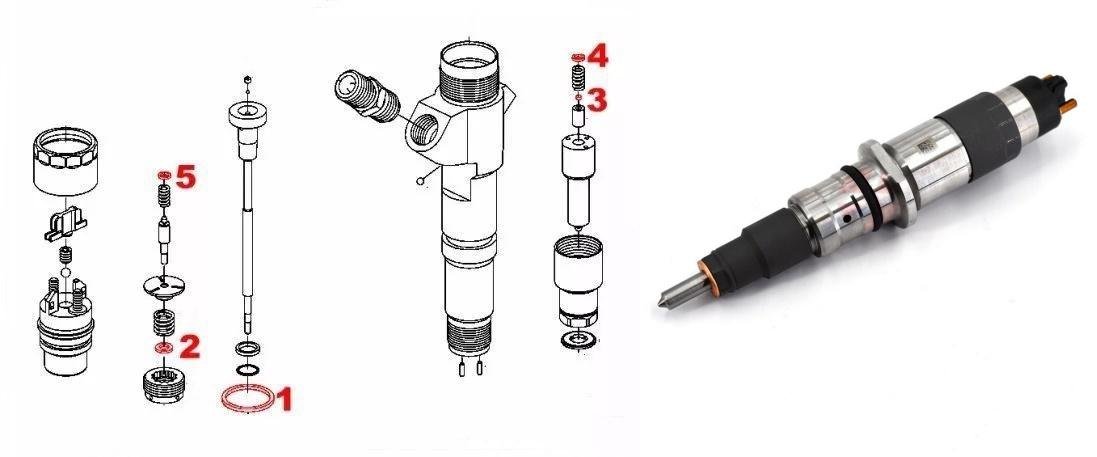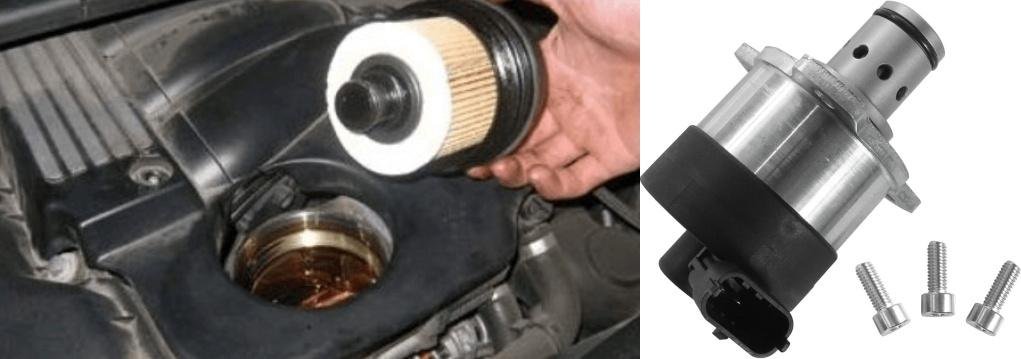
Diesel engine power failure is common. There are many factors, making troubleshooting more difficult. Here is a list of some cases and troubleshooting methods.
Faulty injectors.
Mechanical failure
Mechanical failure (needle valve stuck): Due to more dirt in the diesel fuel or corrosion from water ingress, the needle valve is stuck in the injector and cannot be actuated. Note: ECU may not report errors.
Wiring Failure
Faulty wiring: The harness is disconnected due to vibration, abrasion, etc., or is shorted to the ground by riding directly on the cylinder head. The ECU will report an error.
The method of judgment is as follows:
The idle speed is unstable, and the sound of the diesel engine sounds abnormal
Use the cylinder break method or high-pressure fuel pipe touch method to judge (diagnostic tool to do acceleration test to judge). Diagnostic tools generally have the function of injector excitation test.

Coolant temperature, oil temperature, and intake temperature are too high.
When the coolant temperature, oil temperature, and intake temperature are too high, the ECU enters the overheat protection mode to limit the engine power.
Causes and solutions for high coolant temperatures:
- The radiator water level is too low. Check for leaks and add water.
- Radiator clogged. Check the radiator, clean or repair it.
- Loose water pump belt. Adjust tension as specified.
- Damaged water pump gasket, worn water pump impeller. Check and repair or replace.
Faulty thermostat. Replace
Damaged water hose seals, air leaking in. Check water pipes, fittings, gaskets, etc., and replace damaged parts.
Causes and solutions for high oil temperature:
- Low oil level or lack of oil in oil sump. Check oil level and leaks, repair, and add oil.
- High oil temperature. Check the above causes of high oil temperature and eliminate them.
Poor oil cooler flow. Check and clean
Reason for excessive intake temperature and solution: check the cooling capacity of the intercooler.

Fuel metering unit malfunction.
The fuel metering unit is an actuator to control the rail pressure, mounted on the high-pressure fuel pump, metering unit failure, high-pressure fuel pump with the maximum amount of fuel supply to the fuel rail delivery of fuel. At this time, the pressure relief valve on the common rail pipe will generally open, and the diesel engine will have a “click” noise. Rail pressure sensor problems will have a similar phenomenon.
In this case, you should check the electrical wiring to determine whether it is a fault in the fuel metering unit or a fault in the rail pressure sensor.
Abnormal fluctuations in rail pressure caused by fuel line leaks.
This causes the engine output power to be insufficient. In the process of running the car, there will be unstable speed, the car has a forward scurrying phenomenon. At this time, you should check the sealing condition of the fuel line and repair the leaking parts.

Sensor failure.
The intake pressure sensor is a sensor used by the ECU to estimate the intake air volume (mounted on the intake pipe), the coolant temperature sensor is a sensor used to determine the heat load of the engine (mounted on the outlet pipe), and the rail pressure sensor is a sensor used to detect the fuel pressure of the common rail pipe (mounted on the common rail pipe).
Check whether the intake air pressure sensor, coolant temperature sensor, and oil rail pressure sensor work normally and check their output data streams with a fault diagnostic instrument to determine whether they work normally. Replace the malfunctioning sensors in time. If the oil rail pressure sensor is not working properly, replace it together with the common rail pipe.
Check turbocharger operation.
Check whether there is any noise when it is running, whether there is any oil or air leakage and the heat dissipation of the intercooler. Special attention should be paid to the fact that the supercharger pressurizer speed is very high, if the lubrication is not in place, it is most likely to be damaged. When the vehicle stops, you can’t turn off the engine right away, you should make the engine temperature and supercharger speed down before turning off the engine to protect the supercharger.

At Shanhedongli, you’ll discover a multitude of engine models such as Great Wall engines, Honda engines, Hyundai engines, and Land Rover engines, all accompanied by outstanding service. Rich in models, excellent in service, and a reliable supplier.
